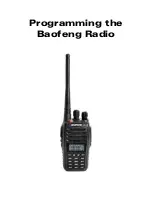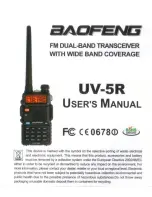
Sensing and Internet of Things
33
Installation and Technical Manual for the
Limitless™ Multi-Protocol Receiver, WMPR Series
ISSUE B
32309669
8.6 | Antenna Environmental
Usage/Concerns
8.6.1 | Choosing an Antenna/Cable to Meet
Application Exposure Conditions
There is no antenna or cable design impervious to every envi-
ronmental condition it could be exposed to. Review the applica-
tion environment as follows:
Step
Action
1
Determine where the antenna will be installed and
the application conditions: indoor, outdoor, or limited
outdoor exposure. Even if the antenna is going to be
used indoors, an outdoor antenna may be more suit-
able (i.e., resistant to fluids, rigid construction, etc.)
2
Determine what the antenna may be subjected to (i.e.,
fluids, chemicals, oils, wind, shock, vibration, etc.)
3
A. Review antenna and/or cable materials (list-
ed in Section 8.1) with respect to resistance
of chemicals and fluids in the application. If
choosing an adhesive mount, adhesive resist-
ance testing may be necessary.
B. If shock, vibration, wind, rain, sleet/snow, etc.
are in the application, choose an antenna rated
for outdoors and has a rigid design as defined
in Sections 8.1 and 8.3.3.2.
4
This step may be required to provide an extra level
of protection, especially if the application may be
subjecting antennas and cables to liquids. The
RP-SMA connections, tilt/swivel joints, and cable
entrances are potential leak paths that could lead
to corrosion. The following procedure is one way to
provide extra protection to these connections and
joints.
Ensure the area applying tape to is clean from con-
taminants by first cleaning it with mild detergent/
water and completely dry. Follow with an isopropyl
alcohol wipe of the area. (See Figure 58).
Layer 1: Wrap a layer of polyvinyl chloride insu-
lating tape
Layer 2: Wrap a layer of rubber splicing tape i.e.
Scotch™ 23
Layer 3: Wrap a layer of UV stable polyvinyl chlo-
ride insulating tape
Layer 1 allows the user to remove Layer 2 for
connector inspection, antenna replacement,
repositioning of the tilt/swivel antenna, etc.
In the end, the antenna/cable choice may need to be tested in
the actual application conditions to prove suitability.
8.6.2 | Protection of Antenna Connections
If the antenna and connectors are not protected by the radome, the connector and threads should be protected from the elements
thorugh an application of protective tape.
•
A recommended protective tape is COAX-SEAL
®
#104 Hand Moldable Plastic Weatherproofing Tape, available from elec-
trical supply houses.
•
Also acceptable is Scotch
®
Premium Vinyl Electrical Tape 88-Super tape, available from 3M.
Figure 58. Application of Protective Tape
Step 1 - Remove radome.
Step 2 - First apply 1/2 inch wide
COAX-SEAL
®
(flexible and moldable
material)
Step 3 - Secondly, apply 3M Scotch
®
Premium Vinyl Electrical Tape 88-Su-
per
Ultimately, the antenna/cable choice may need to be tested in the actual application conditions to prove suitability for the environ-
ment.










































